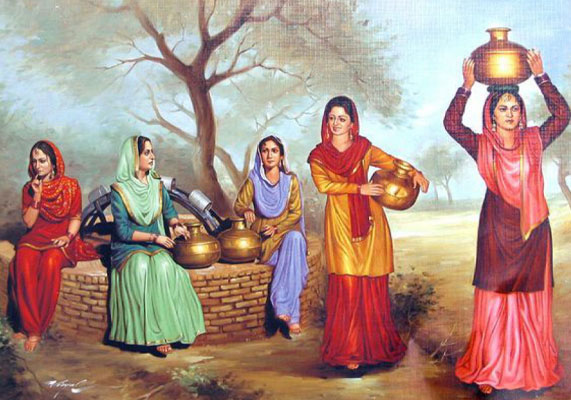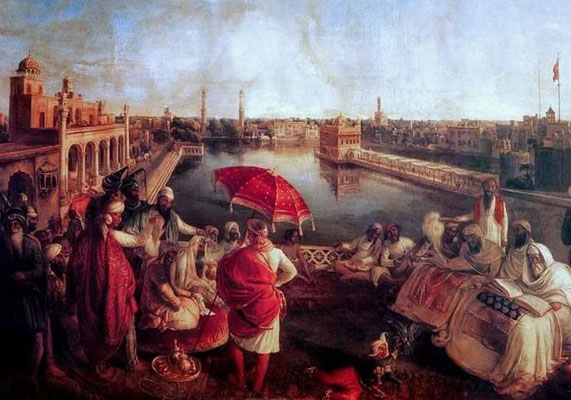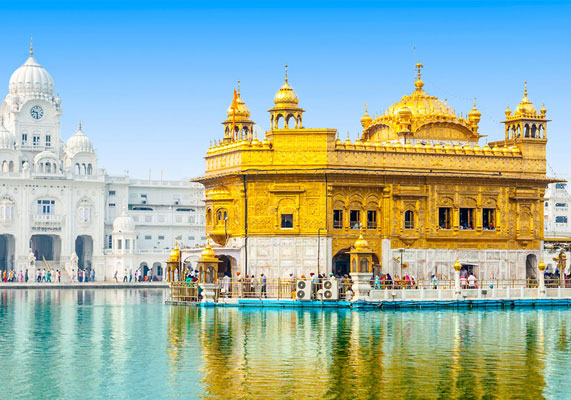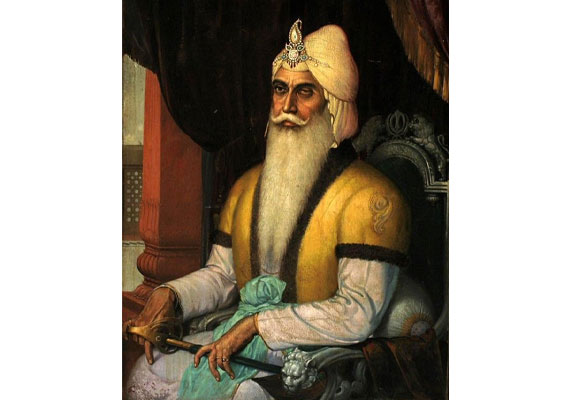Modern period
Early (1526–1858)
In 1526, the Delhi Sultanate was conquered and succeeded by the Turko-Mongol Mughal Empire. The Mughals established prosperity, growth, and relative peace, particularly under the reign of Jahangir. The period was also notable for the emergence of Guru Nanak (1469–1539), the founder of Sikhism.
The Afghan forces of the Durrani Empire (also known as the Afghan Empire), under the command of Ahmad Shah Durrani, entered Punjab in 1749 and captured Kashmir and Punja, with Lahore governed by Pashtuns. In 1758, Punjab came under the rule of Marathas, who captured the region by defeating the Afghan forces of Ahmad Shah Abdali. Following the Third Battle of Panipat against the Marathas, the Durranis regained their power and dominion over the Punjab region and Kashmir Valley. Abdali's Indian invasion weakened Maratha influence.




After the death of Ahmad Shah, Punjab was freed from Afghan rule by Sikhs for a brief period between 1773 and 1818. At the time of the formation of the Dal Khalsa in 1748 at Amritsar, Punjab had been divided into 36 areas and 12 separate Sikh principalities, called Misl. From this point onward, the beginnings of a Punjabi Sikh Empire emerged. Of the 36 areas, 22 were united by Maharaja Ranjit Singh. The other 14 accepted East India Company sovereignty. After Ranjit Singh's death, assassinations and internal divisions severely weakened the empire. Six years later, the British East India Company was given an excuse to declare war, and in 1849, following the first and Second Anglo-Sikh Wars, Punjab was annexed by the East India Company. In the Indian Rebellion of 1857, the Sikh rulers backed the East India Company, providing troops and support. This support proved vital in the Battle of Jhelum, where mutineers killed thirty-five soldiers from the 35 Regiment of Foot, and in Ludhiana, where a rebellion was defeated with the assistance of the Punjab chiefs of Nabha and Malerkotla.
1858 to present
The British Raj had major political, cultural, philosophical, and literary consequences in the Punjab, including the establishment of a new system of education. During the independence movement, many Punjabis played a significant role, including Madan Lal Dhingra, Sukhdev Thapar, Ajit Singh Sandhu, Bhagat Singh, Udham Singh, Kartar Singh Sarabha, Bhai Parmanand, Choudhry Rahmat Ali, and Lala Lajpat Rai. At the time of partition in 1947, the province was split into East and West Punjab. East Punjab (48%) became part of India, while West Punjab (52%) became part of Pakistan. The Punjab bore the brunt of the civil unrest following partition, with casualties estimated to be in the millions.